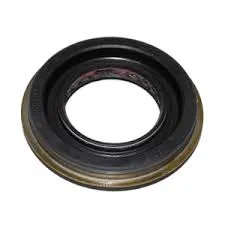10 月 . 05, 2024 21:59 Back to list
Exploring the Benefits and Applications of Metric Oil Seals in Mechanical Systems
Understanding Metric Oil Seals Importance and Applications
Oil seals, also known as radial sealing rings, play a critical role in various machinery and automotive applications by preventing the leakage of lubricants and fluids while keeping dirt, dust, and other contaminants out. Among these, metric oil seals are specifically designed to meet international measurement standards, making them essential components in many engineering and manufacturing sectors.
The need for effective sealing solutions has grown alongside advancements in technology and machinery. Metric oil seals are measured using the metric system, providing precision and compatibility in international markets. These seals are typically manufactured from elastomeric materials such as nitrile, silicone, or fluorocarbon compounds, each of which is selected based on the specific requirements of the application including temperature resistance, chemical compatibility, and durability.
One of the primary advantages of metric oil seals is their ability to maintain functionality under various conditions. They can operate effectively in a wide range of temperatures—commonly from -40°C to +120°C, though some materials can withstand even more extreme conditions. This makes them ideal for use in automotive engines, hydraulic systems, and industrial machinery where fluctuations in temperature and pressure are common.
metric oil seals

In the automotive industry, metric oil seals are used extensively in engines, transmissions, differentials, and wheel bearings
. They help to contain engine oil and grease, which ensures optimal lubrication of moving parts while preventing contamination from external elements. The proper installation of these seals is vital; a poorly fitted seal can lead to leakage, reduced efficiency, and potential damage to components.Additionally, metric oil seals are categorized based on their design and application needs. Common types include single-lip seals, double-lip seals, and spring-energized seals. Single-lip seals are often used for light-duty applications, while double-lip options provide enhanced protection against contamination. Spring-energized seals, on the other hand, can maintain a strong sealing force over time, making them suitable for dynamic applications.
Another important aspect to consider is the sizing and fitting of metric oil seals. They come in various standard sizes that correspond to specific bore and shaft dimensions, which makes it easier for engineers and technicians to select the right seal for their machinery. Furthermore, metric oil seals often comply with various industry standards, helping ensure that products remain consistent and reliable across different manufacturers.
In conclusion, metric oil seals are indispensable components in a plethora of applications, providing essential barriers to fluid leakage and contamination. By understanding their significance and proper application, industries can enhance equipment reliability, efficiency, and longevity, ultimately contributing to improved operational performance and reduced maintenance costs. As technology continues to evolve, the development of more advanced oil seal materials and designs will likely further enhance their efficacy and application range.